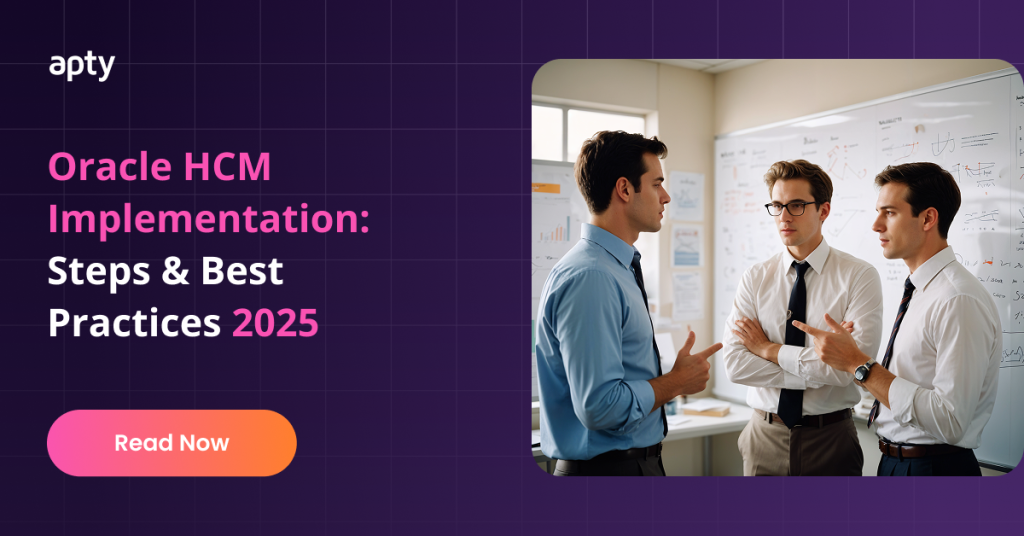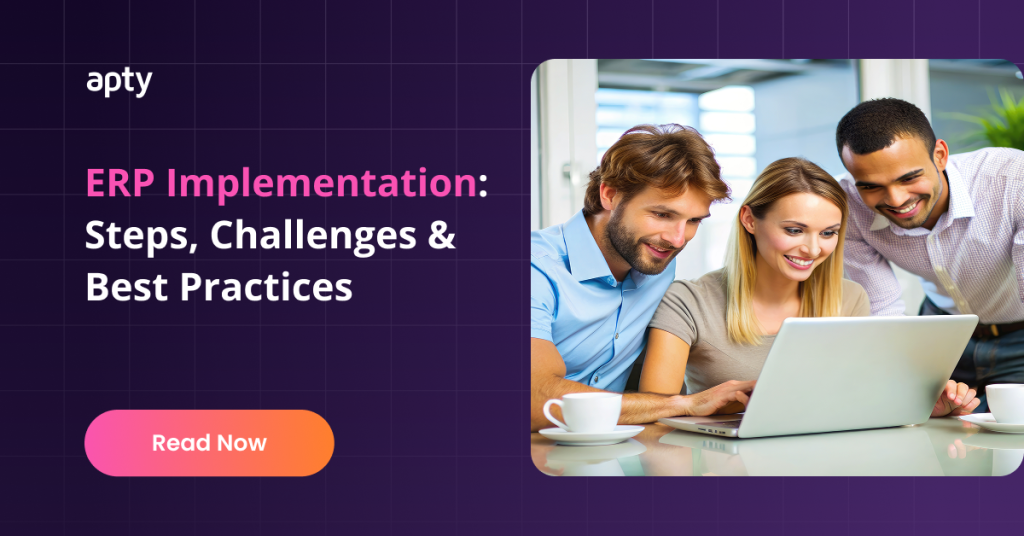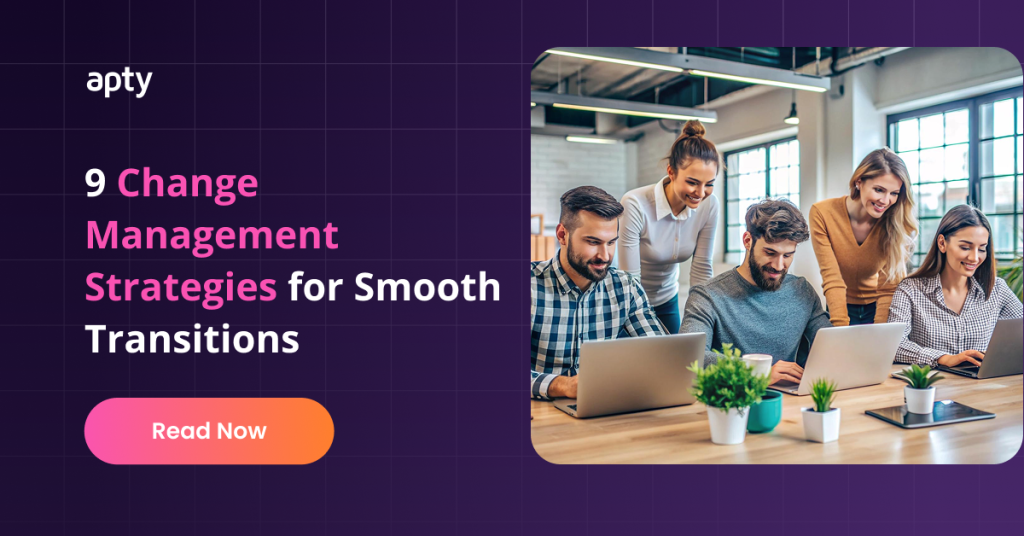A Complete Workday Change Management Guide
Workday has drastically improved its capabilities and features since its inception in March 2005. Today it serves more than 8000 customers and that number is growing at a rate of over 23%. More companies are realizing the importance of having Workday in their application stack.*
Workday change initiatives are not limited to the core HCM. It expands with time and as an HR Director, it is important to keep tabs on what new modules are being added.
There are different types of modules like global compliances, workplace planning, recruiting, talent management, learning, compensation, benefits, payroll management, time & absence, reporting, and analytics.
The difficulty of Workday change initiatives increases as the number of modules and stakeholders involved increases.
The pace at which technology changes is faster than the pace of peoples’ behavior. So, consider this while planning the adoption process.
In this guide, we will discuss in detail how to design, implement, and analyze a change management strategy for Workday.
Workday Change Management Strategy
Workday change management strategy is a way of managing changes made to Workday at your enterprise while achieving the desired objectives and outcomes. While designing it, Workday experts consider all the practical possibilities and design an action plan that will help the company to manage any HR and financial challenges effectively.
Planning your Workday change management initiatives can be done in consultation with a service partner or a Workday consultant, or with other stakeholders who will be impacted by its implementation.
HR directors and managers have to plan the sequence of actions that best suits the organization’s needs. They must also take into consideration that the organization’s environment can change during the whole Workday change management cycle.
Workday Change Management Plan
A Workday Change Management plan involves considering future changes that are going to be made to Workday and their impact on the organization. It is a future-oriented action that requires the HR director to set goals for each phase and create alternative courses of action.
Then, based on testing, research, and analysis, the HR director has to select the best action plan which will help the organization to achieve business goals.
Workday change management initiative is complex and as a result, sometimes, things don’t go as planned. Create a backup plan that acts as a safety net if things go wrong. Workday planning needs to be flexible to accommodate the number of people involved.
As a project owner, it is crucial to maximizing the potential of the workday change management initiative. It is only possible by proper digital transformation and adoption within the organization by minimizing risks.
To ensure successful Workday change management, an organization must capitalize on these three things:
- Agreeing on strategic vision upfront
- Plotting a path to realize the vision
- Measuring the key indicators to quantify the success
In this blog post, we will explore how to handle Workday change initiatives that define guiding principles of your initiative and how you can measure your outcomes.
1. Designing the change
With any Workday initiative, the employees would like to know how the implementation will affect their daily work and overall job efficiency. The key stakeholders would want to know how it will affect business outcomes.
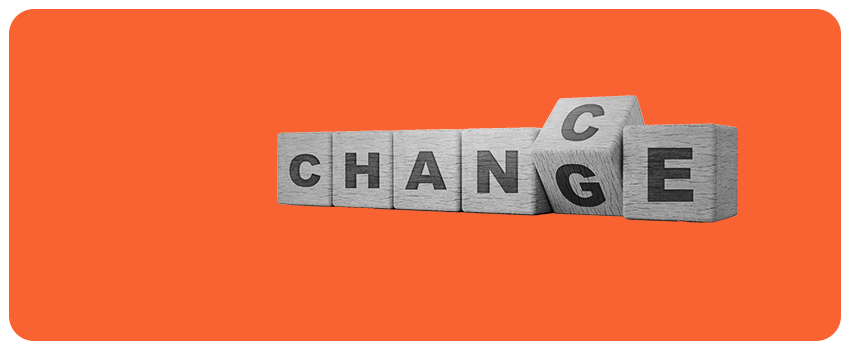
Organizations usually define the project direction and communicate them to the employees which gives them an overview of the impact that a Workday implementation will have on their job.
To know and track success achieved on both the macro and micro levels, it is important to define important goals, objectives, and metrics.
Once that is done, the “project owner” has to ensure that the Workday change initiative stays on track and becomes successful
Understanding who is involved and what they will do in a particular stage will ensure stability. Regular analysis and measurement of key indicators will ensure success. For that, we should start by establishing leadership alignment, and creating a strategic map and governance model.
A. Leadership Alignment:
Most teams fail with Workday projects because of poor goal setting and lack of decision-making. There is no doubt that companies need efficient processes and consolidated systems but how will they achieve success?
It needs efficient leadership where the leaders of respective departments and teams have the decision-making power to address the problems. Usually, the bureaucracy of an organization creates resistance in the decision-making process. As a result, there is a delay in the execution of the Workday change initiative.
To overcome this challenge, it is important to have a Leadership Alignment Program that helps set the project’s vision and objectives and allows them to measure success.
These programs involve the Executive Sponsor, HR team, finance executives, department heads, and IT leaders.
In this stage, it is important to understand which internal and external stakeholders will get involved. Once that is clear, get things aligned by creating a strategy map and project governance model.
A Leadership Alignment Program requires the following:
- A Strategy Map where vision, objectives, and value are defined
- A Project Governance Model where decision-making levels, and authority for local, regional, and global teams are established. All this helps boost project responsiveness among teams by fostering collaboration and minimizing bottlenecks.
B. Strategy Map:
A strategy map defines the vision of the initiative with clear directions that give the project a line of sight and purpose.
The purpose of a strategic map is to align decisions to support the future state and commit to the purpose of the Workday change process. The team must collaborate with executives to decide on common goals and guiding principles.

Buy-in is critical. A corporate strategic vision could be aspirational but what does it mean to a common employee and their manager?
This stands true for other stakeholders as well like department heads, c-suite executives, and job candidates.
Each stakeholder should be considered to facilitate the adoption and ownership of the change. Outline the purpose of each persona and define how to measure their success.
You must quantify the efficiencies and targets that the organization needs to achieve.
To quantify outcomes and metrics, you must first view the current processing baselines, then measure the adoption and performance before and after -go-live at each quarter.
Your goals should be to change the behavior and transform how the organization conducts business operations. Based on this, identify improvements and trends, and take corrective action as needed.
C. Governance Model:
The governance model commits the organization to the vision and roadmap that is set in the Strategic map and provides a framework to achieve the vision.
It defines the process and provides a mechanism that promotes decision-making, ownership, and transparency. It also helps understand whether the organization has deployed the correct resources to make those decisions.
Another key component of the governance model is the communication model. You must relay important information to the stakeholders. Analyze closely the performance of the Workday project and inform the setbacks and successes to the management.
Lastly, the organization must be clear about each employee’s role and empower the decision-makers to make crucial calls at important junctures.
For workday HCM, finance, payroll, and student implementation, governance plays a crucial role.
It is foundational to both production and implementation. Governance is not merely procedural, as it guides transformation, decisions, people, and technology which are foundational elements.
However, misaligned governance can give rise to inconsistency, confusion, and conflicting priorities which may put the change initiative at risk.
If this happens, the time spent in creating the strategic map will go in vain and lose its significance.
On the other hand, a strong governance model ensures that change initiatives align with the vision statement (that is defined in the strategic map) and guides the Workday change in the right direction.
2. Defining the path
One of the most common questions that people ask when dealing with Workday is “where should we start?”
We have created templates that help you identify major points to achieve success within the parameters of the project timeframe.
Workday project execution can take different forms and is heavily dependent on the consultants, service partners, and the organization’s DNA. Some methods are prescriptive for big organizations while other growing organizations opt for accelerated deployment methodologies.
The accelerated deployment methodology ensures rapid Workday implementation and helps the business realize small victories during the implementation phase.
So, an organization goes with the method that best suits its requirements and ideology.
Change Leaders must learn about the organization in and out. Communication Leaders should be able to communicate the message to every level of the organization. These basic factors play a major role in expediting the deployment phase.
There are usually a lot of change management activities to be conducted but the key objectives are to:
- Discuss the plan with the team
- Get stakeholders engaged and involved in the process
- Target key influencers in the organization to become ambassadors to ensure successful change
This can help remove resistance and poor opinions or judgments.
It is important to document critical moves and create a visual plan that tells who needs to do what and when. This helps organize a team into their respective roles and create a clear path to a successful implementation process.
Moreover, future users and stakeholders are usually hesitant about the concept of a new process or change. To counter this problem, it is important to have a “clarity management plan”. It should be a proactive action plan that can prevent employee resistance and turn the uncertainty of employees into ambassadorship of the Workday change project.
Involve key stakeholders and provide clear change management guidance. Let them know about the backup plans and who to rely on in the case of failure. Assign a team to support them with answers to their queries, and make them understand the benefits of undergoing the whole Workday change process.
Script critical moves i.e., completing activities to make success achievable in a given timeframe. The major focus is to prioritize key activities that can help achieve desired results.
The creative below shows us the summarized view of Workday change initiatives.
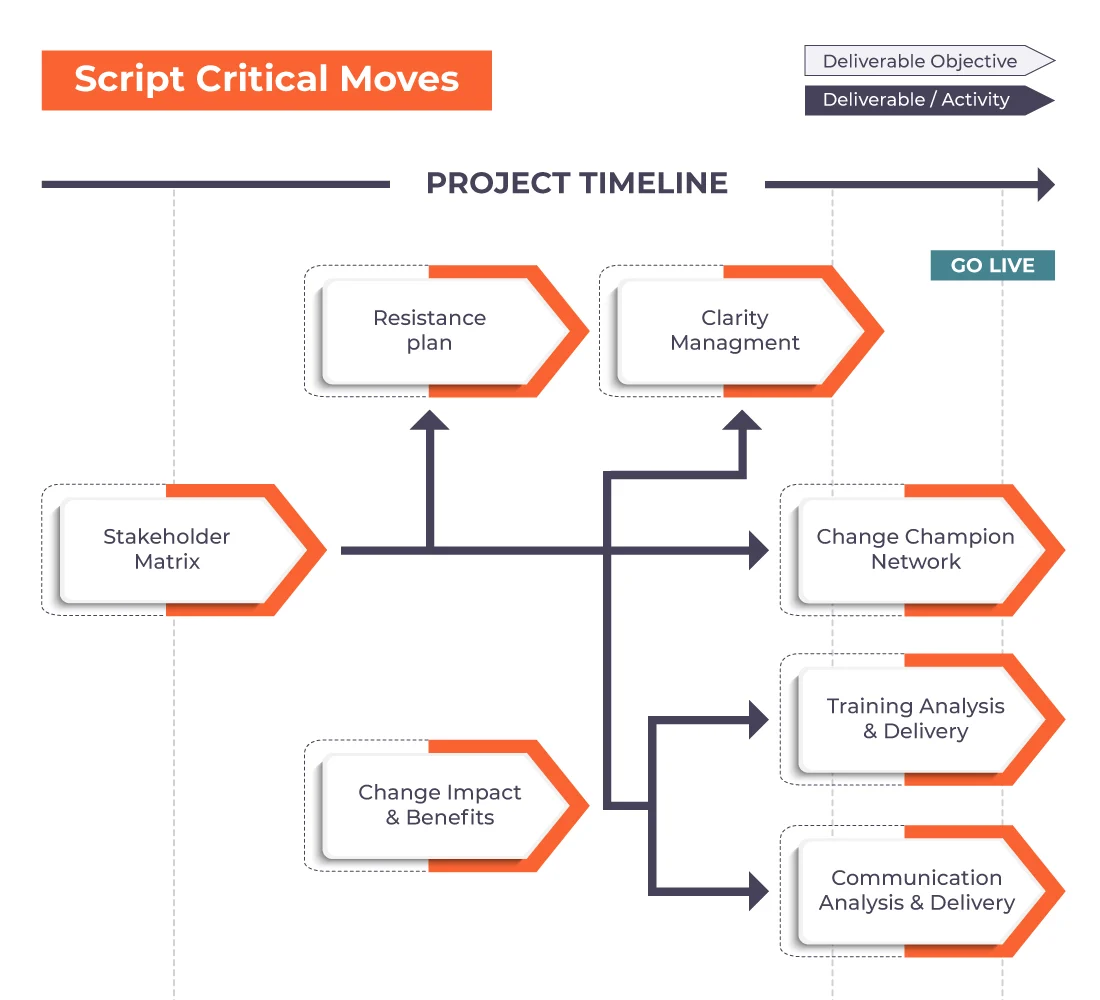
Here you can see the:
- Key activities that an organization must prioritize,
- the change deliverables, and
- their objectives in the order of execution
This information can help any business document their change initiative well and get desired results.
#Step 1: Assess Stakeholders Group: The first step is to create a stakeholder matrix to document all key stakeholders and audiences across the organization. It also takes note of employees who are resistant to the change and helps you assess the benefits that the resistant employee group might enjoy if they accept the change.
#Step 2: Resistance plan: The resistance plan comes to the picture after the assessment phase. It is a set of actions designed to engage key stakeholders in the Workday project and help them realize its value by using various change instruments. Here, the feedback of employees, management, and key stakeholders are taken to get their perspective and analyze the underlying trend that might be future roadblocks.
#Step 3: Clarity Management: It helps overcome resistance through actions. The resistance plan is executed in this stage. Various tools and training methods get center stage in this plan which will help employees understand the power of Workday to understand it better. They witness the real-world benefits of Workday.
#Step 4: Change Champion: The stakeholder analysis is also used as an entry point for the creation of a network of change champions. It includes successfully engaged and influential stakeholders with in-depth knowledge of the project. They act as an extension of the Workday project team.
#Step 5: Training Analysis & Delivery: The change impacts and benefits are the core of any change program. A clear understanding of these benefits helps device training programs for audiences. The training can be done through a variety of methods.
#Step 6: Communication Analysis & Delivery: All the change needs and gaps cannot be covered by the training program alone. Communication also plays a crucial role in showcasing the value of change. So, a failsafe communication protocol is designed which includes emails, video conferencing, in-app notifications, and other relevant media.
In addition, the change impact per stakeholder group can be measured to incentivize the stakeholders as a part of the clarity management activity(#step 3).
The actual Workday change management activity can be more detailed than this but the above-mentioned activities can be a starting point to drive your initiative in the right direction.
Usually, the change plan helps reduce the complexity of change into manageable and easily understandable sets of actions. Each successful completion of each action also motivates the team and the positivity encourages them to speed up the change process.
All these elements contribute to a successful Workday change management deployment.
3. Measuring Success and Enabling Adoption
If we look back at the strategy map, it encourages self-efficiency to increase Workday adoption and self-service to reduce pressure on customer support. These are the key goals and the company must have a system in place to measure the impact of the change initiative.

Tools like Digital Adoption Platforms help measure and analyze whether the task is completed the way it is intended. It also helps the organization identify whether the objectives were completed within the set timeframe. So, it is key to measure success through these pre-defined adoption and usage indicators.
The organization should also look at the experience and satisfaction metrics to improve employee engagement rates. The company can understand the state of experience with the help of surveys & feedbacks. The change champion network should be active even after the post-go-live stage to learn how the employees feel about the Workday change.
Additionally, you can empower your employees with a tool that provides in-app assistance (walkthroughs) and an in-app help deck (repository of knowledge and onboarding content) within the Workday platform. This can be achieved through a powerful Digital Adoption Platform (DAP) like Apty.
Even after all this, how does an organization know if their Workday implementation is successful?
Find the answers to the following questions to understand if your implementation is successful:
- How frequently is Workday used by key stakeholders?
- What is the initiation vs completion rate of the software?
- Are the defined performance targets being met?
- How frequently and at what speed is the transaction being approved by HR Managers?
- Do the Managers know what to look for while approving transactions?
- Is every stakeholder segment adhering to the defined process?
- Are there any problems in the process, training, or employee efficiency?
There could be a number of reasons why any of these results are not as per your expectations. Factors like poor communication, ineffective training, or a lack of clarity about the process among frequent users can be the major reasons.
Workday usage metrics generated via DAP provide a greater overview of adoption and help you realize the application’s real-world functionality. It also helps understand the processing efficiency of the production tenants and training enhancements. This information can be compiled and shared with the respective project teams.
If you look closely at the strategy map created in phase zero, there were key goals such as “ensuring successful completion of the process” and “filing of clean data”.
If the Workday processes are not followed by a selective few in a particular group, ask the engagement managers to notify them through announcements in the Workday application. This team can then revisit the in-app onboarding flows or use the knowledge content that can instantly train them about the processes.
Key features like Data validation will help ensure clean data which will eventually be helpful to make crucial decisions without any speculation of it being tainted.
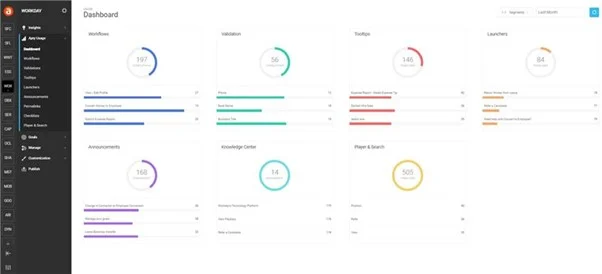
Apty helps enhance the user experience on your Workday deployment and gain insights on adoption metrics. It not only helps the company to be at the forefront of Workday change initiatives but it helps manage digital transformation efforts as well.
The main goal of Apty is to help an organization realize how its Workday ecosystem can be utilized at its fullest potential. Apty’s AI-powered analytics helps the organization measure the return on investments by tracking key indicators.
It helps the organization see where the employees are using self-guided workflows, how they are completing their objectives (like filling in expense details, time entry, attendance, and report creation). It also gives you a complete overview of how far the processes were followed, and the number of objectives completed.
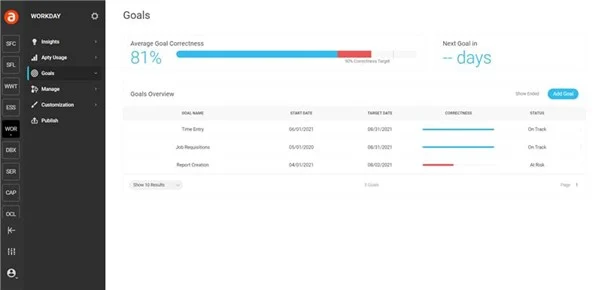
Apty provides a clear understanding of your Workday training content. If a majority of your employees are failing to complete activities, either the training is inefficient or the processes are too complicated.
Irrespective of where you are in the Workday change management journey, a Digital Adoption Platform like Apty will help you strategize and monitor the change process to ensure success.
*Source: Workday’s Growth
Table of Contents
- A Complete Workday Change Management Guide
- Workday Change Management Strategy
- Workday Change Management Plan
- 1. Designing the change
- A. Leadership Alignment:
- B. Strategy Map:
- C. Governance Model:
- 2. Defining the path
- 3. Measuring Success and Enabling Adoption
- Make Your Enterprise Software Work
- Oracle HCM Implementation: Steps & Best Practices 2025
- ERP Implementation: Steps, Challenges & Best Practices
- 9 Change Management Strategies for Smooth Transitions




